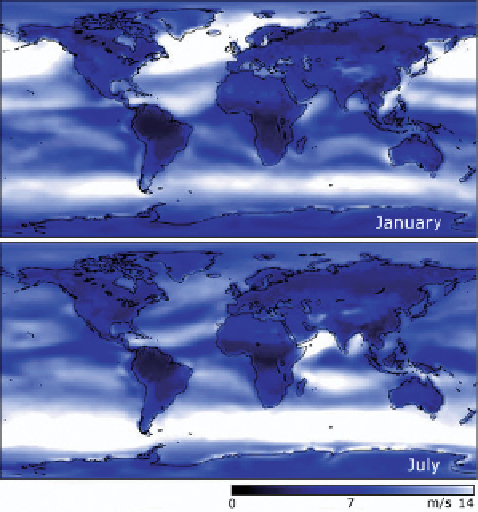Environmental Engineering Reference
In-Depth Information
demand of mankind. As is the case with water power, only a very small portion of
this energy is usable. The largest supply of wind power is over the open seas where
no obstacles slow the wind down. Over land the wind very quickly loses its speed
due to the effects of rough terrain. For the same level of wind power as on the open
seas it would be necessary to go to higher altitudes or use substantially larger tracts
of land. Inland the effect on the wind due to the roughness of the terrain is no longer
noticeable at altitudes higher than several hundred metres. As a result, wind use
becomes more diffi cult as the distance from the coast increases. However, optimal
locations also exist on hills and mountain tops inland.
The supply of wind energy on earth varies considerably (Figure 8.3). Whereas it
could cover about one-third of demand in Germany, the potential in some countries
is so vast that places like Great Britain could even export large quantities of wind
power while covering all their own electric power needs. The best locations for wind
power are usually where the wind hits land from the open seas without slowing down.
Figure 8.3
Average wind
speeds worldwide.
Source: http://visibleearth.
nasa.gov.
8.2 Utilizing Wind
Sailors have been using wind power as driving energy for centuries. However, one
major characteristic of wind power is the strong fl uctuation in the energy supplied.
The capacity of the wind increases with the third power of wind velocity. Put more
simply, this means that the capacity of the wind rises eightfold when wind speed
doubles.

